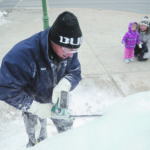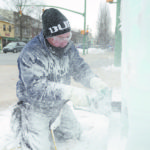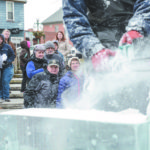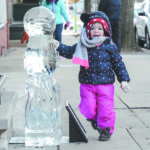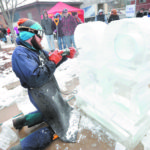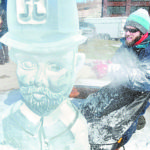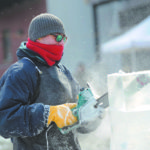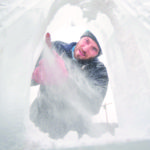What compels a man to pick up a chisel or chainsaw and carve a Teddy bear out of a block of crystal-clear ice? In the case of Ernie DiMartino, desperation. Along with an untapped natural talent.
“I was desperate for a marketable skill,” said DiMartino, who now operates DiMartino Ice, founded by his parents, Art and Joan DiMartino, in Jeannette, Westmoreland County.
In the early 1980s, after some time in college and five years in a steel mill, Ernie DiMartino worked on an assembly line building Volkswagen Rabbits, eventually becoming an elected union official representing 300 people and handling their grievances.
“I learned an awful lot about every aspect of the auto industry,” DiMartino said. “It was a great experience for me.”
He continued helping with the family ice business, and when a neighbor approached him about going into ice carving, DiMartino declined. He was just too busy. A year or so later, though, when auto manufacturing was moving out of the country, DiMartino cast about for a new career. The neighbor again suggested ice carving, and now DiMartino warmed to the idea.
“So that’s how I ended up carving ice,” DiMartino said. “But I found that I did have some natural talent that I didn’t know I had.”
That led to DiMartino sharing a story about an art teacher in his high school telling him, “You have no artistic talent.” She also refused to let him join his school’s art club, the Rembrandt Club.
What he learned, however, was that his artistic insight revealed itself more in 3-D work than on paper.
“Even as a kid when I was building a snowman, I wasn’t content with putting a stick in his face for a nose,” DiMartino said. “I made a nose out of snow.”
Once he decided to launch the ice carving business, he signed up at a community college for an art class. His professor piled stools, books and other items on a desk and told the students to draw it. DiMartino drew the desk, the backs of the heads of students in front of him, the posters on the walls … his professor gave him extra paper to tape to his original sheet then hung the whole creation on the bulletin board and said, “Everybody sees differently.”
“And that’s when I realized that my (high school) teacher was wrong,” he said, referring to the denied entry to the Rembrandt Club.
A sculptor was born.
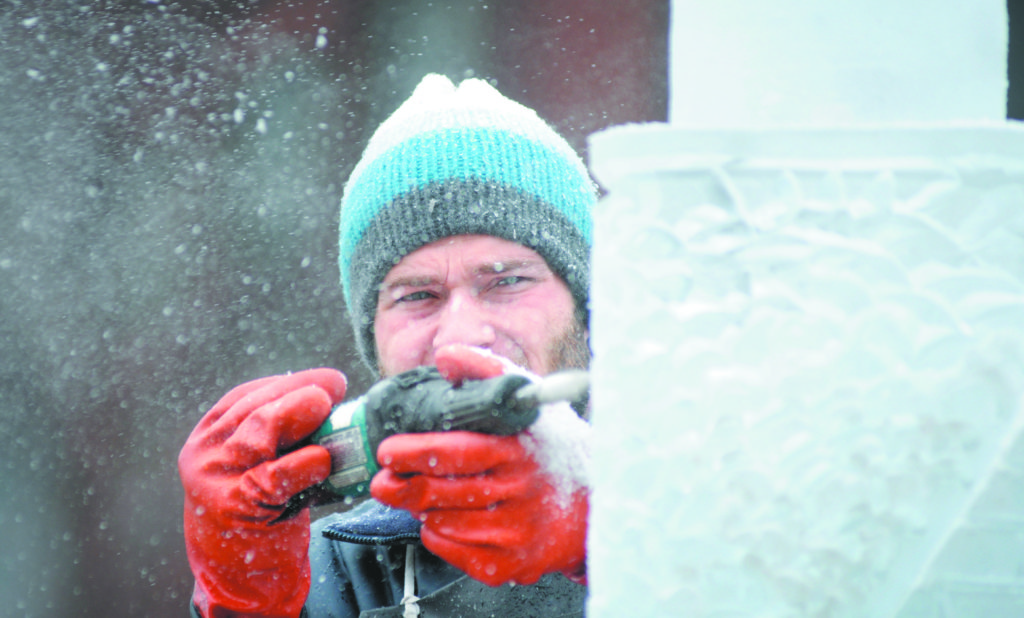
Pushing the limits
DiMartino learned from other ice carvers and through practice and persistence began entertaining local ice fairs and festivals with DiMartino Ice sculpting.
On December 31, 1993, his company created the sculptures for the very first “First Night State College” celebration, hosted by the Central Pennsylvania Festival of the Arts. DiMartino Ice has returned every year since, decorating State College’s streets with icy sculptures as high as 18 feet and as wide as 60.
“They really can turn just a plain block of ice into a work of art,” said Rick Bryant, First Night executive director. “They did a rendition of a painting of George Washington Crossing the Delaware. That remains a favorite of mine.”
The carving involved about 13 different faces, Bryant said, and showed the skill of the DiMartino sculptors.
“There are some limits as to what you can do in ice, but they really push those limits,” he said.
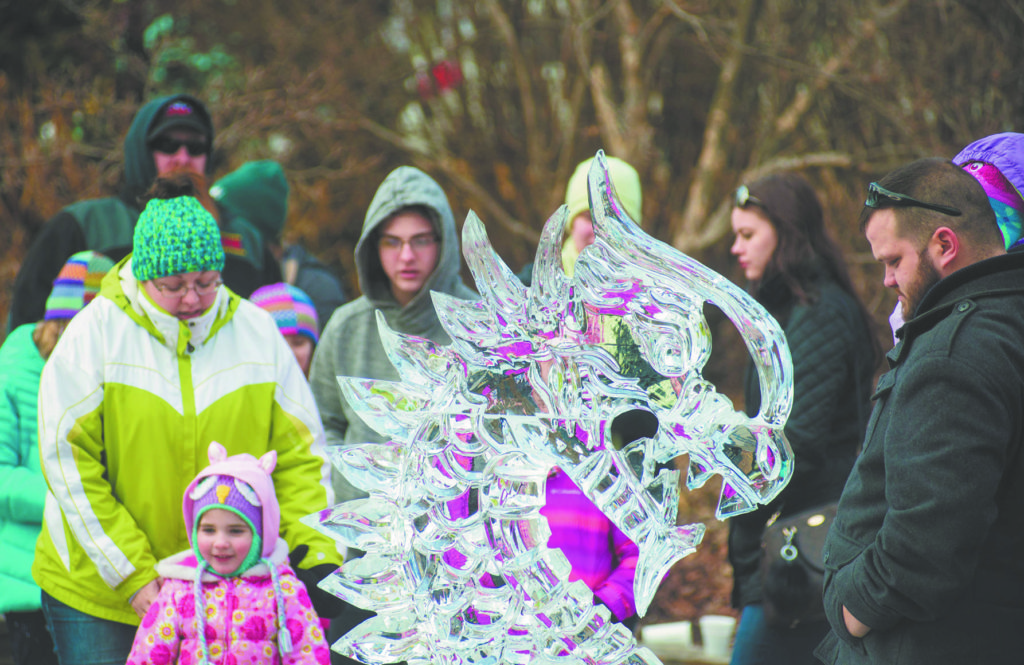
Life as an inspiration
A shimmering, delicately-sculpted giraffe. A magical Japanese castle. Roses. Butterflies. A heart-pumping Russian ice slide and many more glittering creations have added fun and beauty to and many events.
“Ice carving actually changed the way I, literally, look at life,” DiMartino said. “Once you start creating art that is representative of life, you tend to look at life differently.”
Whether a bird, the bark on a tree, or something as simple as a book, if he’s asked to carve it, he gives it a new appraisal.
“Someone asks you to carve a fire hydrant. You know, you’ve seen five hundred fire hydrants,” he said. “Now you’re looking for a fire hydrant (to study).”
He and his carvers use grinders, router bits, disk sanders, torches and other tools to bend the ice to their will. They have modified and developed tools themselves.
“I can remember when I started, it was just a chain saw and chisels,” he said. “Now we have a whole arsenal. There’s boxes of tools that we bring to the job.”
One of DiMartino’s strangest creations was a set of upper and lower teeth a dentist requested for a retirement party. The dentist jokingly commented on the sculpture’s receding gums.
For the Mount Joy Fire and Ice Festival, DiMartino at first refused when one of the sponsors, a plumber, asked him to carve a toilet.
“I rarely turn down a suggestion,” he said. “My concern was that people would use it as if it were real, if you know what I mean. I told him the only way I’ll do it, the lid’s going to be down. And it was the hit of the event. It was a great photo op.”
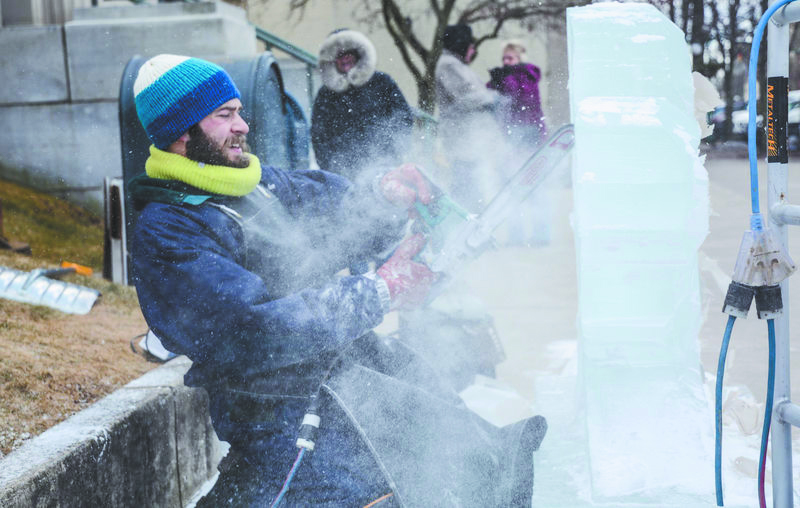
Transitory art
With all the talent and effort it takes to make an ice sculpture, how can he bear knowing it will end up as a puddle of water? For DiMartino, there are a few ways of looking at that.
“They come from the earth, and they go back to the earth,” he said. “At the same time, it’s the best planned obsolescence a company could have, because we get to do it again next year.”
“It’s transitory art,” Bryant said. “Depending on the weather, it might look good tomorrow, it might not.”
As for the ice sculptors, they pack up their tools and leave before the carvings melt.
“I’m not there when they go away, so I don’ have to watch it. It doesn’t break my heart,” DiMartino said, then added with the cheerfulness of a snowman, “I get the opportunity to do it again and do it better next time.”
For more information on DiMartino Ice, please visit www.dimartinoice.com.


